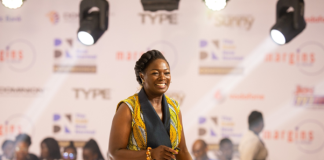A big cheer to all Ghanaians as we revel in the 66th birthday of our nationhood! Independence day celebrations always bring into focus issues of our identity and how that shapes our sense of independence. Perhaps, of the many ‘side effects’ of colonial rule, the dominance of the English language is the strongest when it comes to redefining our identity. Does this matter to the brand communicator?
On any day, choosing the best strategy to advertise your brand is a tricky venture. Audiences are busier and don’t have time for your brand message, and they consume paid media content and see no reason to spare their data to watch/listen to your advertisement [but why should they?]. Perhaps, more importantly, they are sceptical about brands! So in designing brand messages, communicators must think strategically about how to attract and retain audience attention.
If you are a brand communicator, you have probably tried different tricks; celebrity endorsements, fear, laughter, shock or sex appeals, etc. But whether or not any of these strategies will work, is the question of whether the audience ‘gets’ your message. This is something that is directly connected to the language you used. And yet, language is often considered not that big a deal. Often the plan favours choosing the most widely spoken by the audience – English and Akan. After all, most Ghanaians speak English or Akan and so advertising to them in either of the two should be fine, right?
According to a recent research report, this is not quite so. The research is titled: ‘Does language matter when advertising to Africa’s multilingual audience’. It explores the importance of language in advertising; and shows that when it comes to consuming advertisements, people do have language preferences, in spite of their competencies. While I might be good in Ga, I may prefer Akan as the language in which I would rather deal with people.
Here is the logic. For most of the literate older generation, English was forced on us through school [You are probably thinking about how you used to strategise which language to use to ask for permission to visit the washroom – dare you speak vernacular to your teacher at the time]. Thus, even though English is formal and also a language we understand, our preference may still lie with our mother tongue. The reverse is also true for the younger generation. While they have grown up speaking English by default, there is pressure on them to use local languages outside of school. So their loyalties may differ. Thus, the assumption that because people speak a certain language it should be fine to advertise to them in it may be wrongly-footed.
According to the research, the better bet may be to adopt a blended language format. That is, adopting a ‘best of both worlds’ approach. Delivering your brand’s message in a blend of say English and Ga when advertising to Ga communities, or Ewe and English when advertising to Ewe communities should appeal to the unique sensibilities of the multilingual audiences there. This is because of the opportunity for complementary benefits.
As Nelson Mandela once noted: ‘If you talk to a man in a language he understands, that goes to his head. If you talk to him in his language, that goes to his heart’. While the statement suggests stronger feelings for local languages, it also shows the value of synergies. Blending local and English languages means we get the opportunity to engage both the heart and head of the multilingual audience. This should make it preferable to the audience, while also boosting the odds that they will pay attention.
Today’s brands must think global and act local. This is in order to unleash connections with the audience while enabling them to feel a part of the goings on beyond their immediate circles. Blending indigenous languages and the colonial legacy English is a means to this end. First, you get to show that you are ready to accommodate your audience’s unique preferences and sensibilities. Second and importantly, you get to do this without appearing to be cutting them off from the rest of the world. That’s two for the price of one!
The author is a senior lecturer at the University of Ghana Department of Communication Studies ([email protected])










